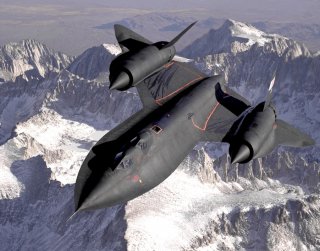Surprise: This Country Almost Shot Down an SR-71 Blackbird
It wasn't the Soviet Union.
Here's What You Need to Remember: The Swedes’ Saab Viggen fighter once became the closest to ever shooting down the famed Blackbird, even achieving missile lock and visual contact.
The SR-71 Blackbird is a legendary plane, which had a long life that began in the 1960s and ended in the 1990s. The plane, considered the fastest ever to fly, was famously never shot down, although it did once have a close call with a meteor while flying over North Korea in the early 1980s.
A recent report looked at another close call the SR-71 had, with an unlikely source: the Swedish Air Force, from a nation that was not an enemy of the United States and was not among the countries on which the plane typically performed reconnaissance missions.
According to a report last August by hotcars.com, the Swedes’ Saab Viggen fighter once became the closest to ever shooting down the famed Blackbird, even achieving missile lock and visual contact.
It happened in the 1980s. Back then, the Blackbirds flew a flight path that was known as “The Baltic Express,” which entailed flying through “a small gap of international airspace directly beside Swedish controlled airspace,” before continuing towards Soviet airspace. Doing so would sometimes catch Swedish air defense radar.
The planes had been following this route for years, but by the 1980s, radar systems had gotten much more powerful.
“Devising a new plan for intercepting the SR-71s, a frankly terrifying, and unorthodox strategy was devised,” the HotCars report said. “Scrambling from their bases, Viggen fighters would enter a steep climb to reach an altitude just below the SR-71, accelerate to twice the speed of sound, then climb again to fly directly towards the SR-71 in a head-on approach, almost like a game of chicken. While typically intercepts would approach from behind, allowing missiles a better chance to lock on, the Viggen’s Skyflash missile was capable [of] using its radar to lock on from the front, making the head-on attack the Viggen’s only real window for an effective missile lock, as intercepting the Blackbird from behind was an impossible task.”
This led to January 1986, when a Swedish pilot named Per-Olof Eldh, using a Viggen fighter jet, lined up with the Blackbird’s flight path and even gained full missile lock. However, Eldh did not fire, and the two planes ended up merely crossing paths. The same pilot would go on to have five more interceptions using the same strategy.
“The point had been proven [and] it was clear the Blackbird could no longer fly wherever it pleased without being challenged.”
Then, in 1987, an SR-71 veered off-course into Swedish airspace and descended dramatically. Flying alongside it, the Swedish planes realized one of the jet engines on the Blackbird had exploded, so the Viggens protected the Blackbird, escorting it out of Swedish airspace. That mission would be declassified many years later, in 2017, leading to the U.S. Air Medal for Bravery being awarded to the Swedish pilots in 2018.
Stephen Silver, a technology writer for the National Interest, is a journalist, essayist, and film critic, who is also a contributor to The Philadelphia Inquirer, Philly Voice, Philadelphia Weekly, the Jewish Telegraphic Agency, Living Life Fearless, Backstage magazine, Broad Street Review and Splice Today. The co-founder of the Philadelphia Film Critics Circle, Stephen lives in suburban Philadelphia with his wife and two sons. Follow him on Twitter at @StephenSilver.
This article was originally published earlier this year and is being reposted due to reader interest.
Image: Wikimedia Commons.

